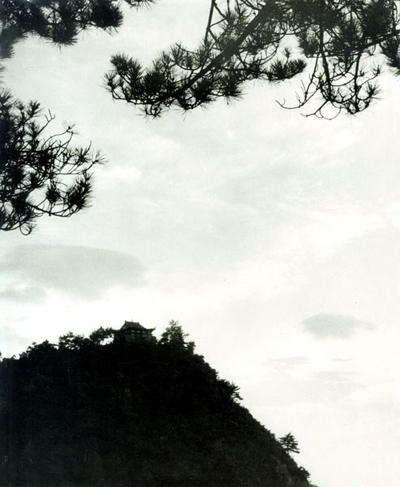 |
|
Fairy Cave, a black-and-white photograph taken in 1961 by Jiang Qing, wife of Mao Zedong. The photograph, along with a poem written by Mao to accompany the image, fetched 340,000 yuan ($55,800) at Huachen Auctions' autumn sale in Beijing on Saturday. Provided to China Daily
|
A calligraphic album of 37 poems by Mao Zedong with sound provenance fetched 14.26 million yuan ($2.34 million) at an auction in Beijing on Saturday night.
The calligraphic works were painted in running script (xing shu) by Guo Moruo (1892-1978), a government official and leading author and scholar of 20th-century China.
Guo finished the album in 1967, a year after the start of the "cultural revolution" (1966-76). He gave them to his sister-in-law Yu Lixiu as a gift.
Yu kept the album as a family treasure for decades, including years of harshness when she labored at a cadre school in Anhui province.
"I believe collecting means history, emotion and responsibility. The works have a soul and provide a living historical context. I hope they can find a 'bosom buddy' who will preserve them well and promote their glories," Yu said.
The album attracted a packed room of bidders and observers at the China Guardian Auctions' autumn sales.
"The lot is a treasure because you rarely find such a complete album with a large sheet size among Guo's works of calligraphy. At the age of 75, he endowed every character under his brush with vigor and richness," said Dai Wei, manager of Guardian Auctions' Chinese painting and calligraphy department.
"One can feel Yu's deep admiration and respect for her brother-in-law, the person who led her to 'pursue truth, virtue and beauty', rising from the paper," he said.
Before Saturday night's sale, Irrigation Ditch of Happiness (Xing Fu Qu), a modern Chinese painting portraying Mao attending the opening of an irrigation ditch at a revolutionary base, was sold privately for 40.6 million yuan.
The work was painted by a production team led by noted painter Liu Wenxi. It created a great stir when it appeared at the national fine arts exhibition in 1974 and was widely published as posters and on the covers of magazines. It was later identified as a textbook work of the revolutionary-era "Red Classics" art genre.
Works from the "Red Classics" genre have had a stable market performance in recent years. Signature works frequently appear at auction, setting record-breaking prices.
For example, Li Keran's ink drawing of Mao Zedong's residence in Shaoshan sold for 124 million yuan last year, and Xu Beihong's Jiuzhou Wushi Le Gengyun (Happily Farming in a Peaceful World) for 267 million yuan in 2011.
The "Red Classics" genre forms a significant part of New China's art history, said Dai, the manager.
"The category has registered steady growth along with the development of China's auction industry, surviving the ups and downs of the market.
"Artists of that period invested unrivaled enthusiasm in creating works that are beyond the imagination of people today. And many of them developed unique styles that still influence the current art scene and deserve our full respect," he said.
Another historical image to sell at auction on Saturday was a black-and-white photo taken by Jiang Qing, wife of Mao Zedong, along with a poem Mao wrote for the photo. Together, the items fetched 340,000 yuan at Huachen Auctions' autumn sale in Beijing.
Fairy Cave was taken during the Lushan Conference, which was held at Lushan Mountain in Jiangxi province, in 1961. The picture presents an expansive view of exotic stones, age-old pine trees and a temple on a mountain peak.
Mao praised his wife's photographic technique by composing a poem in the qi jue form - a classical structure with seven characters in each of its four lines.
Another photograph taken by Jiang during the same period was sold at the same hammer price at Huachen Auctions' spring sales in May. Titled Chairman Mao, the Brightest Sun in the Heart of the World's People, it shows the late leader relaxing in a wicker chair, and demonstrates Jiang's preferred backlighting technique.
"Red Classics photos have received great recognition from buyers, with greater market potential to further explore," said Li Xin, manager of Huachen Auctions' photography department.
We recommend:
